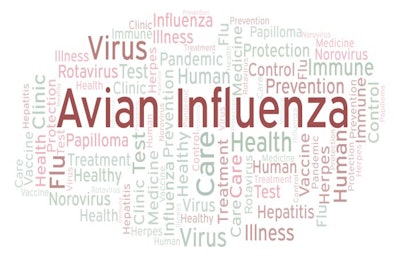
As the peak season for highly pathogenic avian influenza (HPAI) comes to an end in the northern hemisphere, Japan and in South Korea each report one new outbreak in farmed poultry.
With another outbreak confirmed, the number of Japan’s poultry farms hit by HPAI since the start of the 2021-2022 has risen to 18.
The latest outbreak was announced by the agriculture ministry. It affected a flock of around 170,000 broilers near Yokohama town. Following a spike in mortality, presence of the HPAI virus was confirmed. While the H5N8 virus serotype was detected at two presences late last year, more recent outbreaks have been linked to the H5N1 virus variant.
If confirmed, the most recent outbreak will bring the nation’s losses of poultry from the H5N1 virus since November of 2021 to more than 1.1 million birds. Including the two outbreaks linked to the H5N8 virus, the total rises to almost 1.26 million Japanese poultry.
Yokohama is in Aomori prefecture, which is the northernmost prefecture on Honshu. One other farm in this prefecture was affected by HPAI in December of 2021.
Prior to this latest outbreak, Japan’s most recently confirmed cases were in a chicken flock in Miyagi prefecture last month. This has recently been officially notified by the nation’s veterinary authority to the World Organisation for Animal Health (OIE).
Also over the past few days, a number of further wild birds in Japan have tested positive for the H5N1 and H5 family of HPAI viruses. According to the OIE report, these included 78 crows and two eagles.
One new outbreak suspected in South Korean poultry
In the past day, the country’s agriculture ministry has reported one new suspected HPAI outbreak in South Korea. Affected was a layer flock of around 135,000 laying hens at Gimhae in the province of South Gyeongsang.
If confirmed, it will bring the country’s total outbreaks since November of 2021 to 47. Around half of these have been in ducks, and a further 14 in laying hens. Affected farms have been located in seven provinces, and this would be the second infection of the season in South Gyeongsang.
South Korea’s last confirmed HPAI outbreak was on a duck farm in South Jeolla province on March 4.
At the end of March, the ministry reduced the nationwide HPAI alert level from “serious” to “caution.” Compared to the winter of 2020-2021, the number of outbreaks in South Korea was down by 58% at the time.
Meanwhile, four more wild geese found dead in South Korea have tested positive for the H5N1 HPAI virus serotype, according to the latest OIE notification.
Philippines further strengthens HPAI control measures
At the end of March, the Department of Agriculture described the HPAI situation in Luzon as “under control,” reported the Philippines News Agency (PNA). Nevertheless, the Agriculture secretary announced further actions to prevent the spread of the virus to other regions. Among these was a one-month ban — with immediate effect — on movements of live birds (including chickens, ducks, game birds and pigeons) from Luzon to other regions of the country.
Earlier this week, around 3,000 ducks had been culled due to HPAI in southern Mindanao. Affected were birds in a town in Davao del Sur, a province in the Davao region.
Latest update from Philippines authorities reported by the PNA puts the total outbreaks in the country at 70 in 10 regions. Of these, 67 outbreaks are described as “resolved.”
Recently, a total of 3.6 million pesos (PHP; US$70,000) in compensation has been distributed by the Department of Agriculture. This has gone to owner of ducks, quail, and native chickens in 49 communities following the culling of their birds. Rates are PHP100 per duck or chicken, and PHP15 for each quail.
The latest official reports to the OIE outline 22 new HPAI outbreaks among Filipino poultry flocks starting between February 23 and March 25. Of these, 14 were on Luzon, and eight on Mindanao. Directly affected were a total of around 50,000 birds, including one farm with 22,545 broiler breeders.
So far this year, 54 HPAI outbreaks have been officially registered in this Southeast Asian state, involving more than 156,000 poultry.
Latest report from the World Health Organization indicates no further human infections with avian influenza A viruses in the Western Pacific region.
View our continuing coverage of the global avian influenza situation.

















